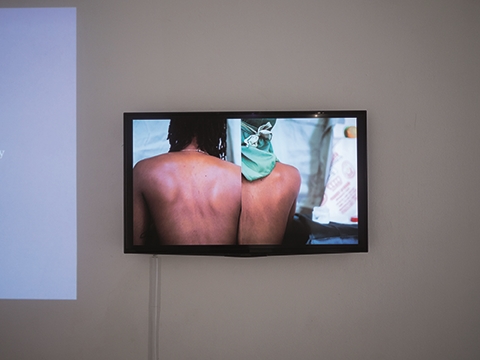Torin Monahan
Crisis Vision: Race and the Cultural Production of Surveillance
Durham, 2022, 232 pages.

Photo: courtesy of Duke University Press, Durham
Durham, 2022, 232 pages.
In Crisis Vision: Race and the Cultural Production of Surveillance, Torin Monahan uses a cultural-studies approach to examine the work of select contemporary visual artists who critique surveillance. Monahan, a scholar who specializes in the social and cultural dimensions of surveillance systems, dedicates the book’s introduction to the definition of “crisis vision,” which, in conceptual terms, describes “a cultural formation that positions people in the world and structures their relationships.” He also differentiates “surveillance art” from “critical surveillance art,” with the focus of the latter going beyond surveillance problematics to address “issues of domination, oppression and inequality.” Then, the interrogations unfold across five chapters, whose single-word titles provide the investigative framework: “Avoidance,” “Transparency,” “Complicity,” “Violence,” and “Disruption”; works by artists such as Trevor Paglen, Danielle Baskin, and Santiago Sierra provide relevant case studies.
In response to the growing ubiquity of — and ever-expanding market for — tracking and control technologies, surveillance is an increasingly popular topic of exploration among artists. However, Monahan notes that there is a dearth of artworks on the subject that adequately confront issues such as injustice, complicity, racism, and sexism, which structure the practices of othering and targeting. Likewise, I offer that there is a shortage of critical writing on surveillance art that pushes beyond the surface to consider, for example, how artists who claim to critique the hierarchies of privilege that enable surveillance culture may be simultaneously participating in and profiting from them. What distinguishes Crisis Vision from other publications focusing on the topic is Monahan’s attentive consideration of the concepts that articulate surveillance systems and by extension inform critical surveillance art, such as opacity, transparency, participation, transiency, invisibility, and identity. Rather than accepting these terms as formulaic elements of argument or assigning them binary values, Monahan reveals how they are often used in the service of privilege and are socially, culturally, and contextually flexible.
Create your free profile or log in now to read the full text!
My Account



